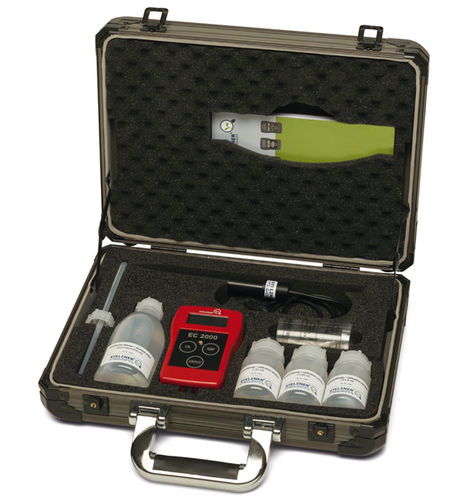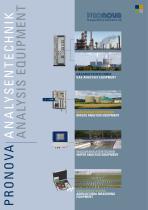
- Farm Management
- Measuring instrument
- Water analyzer
- Stelzner/ Pronova Analysentechnik GmbH&Co.KG
Water analyzer EC 2000nutrient solutionelectrical conductivityportable
Add to favorites
Compare this product
fo_shop_gate_exact_title
Characteristics
- Analyzed product
- water, nutrient solution
- Measured value
- electrical conductivity
- Configuration
- portable
Description
Measuring conductivity in a solution
Electrical conductivity determines the electrical current between two points (electrodes) of different voltage potentials in a liquid. The conductivity increases as the amount of salt, acid or base contained in a solution increases. Conductivity is measured in units of mS/cm. The scale for water-based solutions starts with pure water (conductivity equals 0.05 µS/cm at 25 °C) and ends with a basic solution of 1.0 mS/cm (e.g., potassium solutions). Potable or surface water has a conductivity value in a range from 0.1 to 1.0 mS/cm.
Conductivity is measured using a measuring cell which consists (in the simplest case) of two similar electrodes. An AC voltage is applied to an electrode and this causes the ions in the solution to move in relation to the electrode. More current flows between the electrodes when more ions are contained in the solution. Using this measured current, the meter calculates the conductance of the solution and then, based on the cell specification, the actual conductivity value.
Areas of applications:
For horticulture, the conductivity value is also referred to as the EC value. The EC value is an indicator for the quantity of dissolved salts. It is specified in mS/cm.
The EC 2000 is used in all areas of cultivation and irrigation systems, including classic floriculture, substrata production and soil-free cultivation. It enables you to monitor basis solutions and nutrient solutions during fertilization. You can also check the salt content in substrata mixtures.
Catalogs
Other Stelzner/ Pronova Analysentechnik GmbH&Co.KG products
Conductivity
Related Searches
- Electronic weight scale
- Portable analyzer meter
- Weather station
- Moisture analyzer meter
- Digital analyzer meter
- Temperature weather station
- Wireless weather station
- Soil sampler
- PH analyzer meter
- Benchtop analyzer meter
- Soil moisture sensor
- Automatic weight scale
- Portable soil sampler
- Temperature datalogger
- Wind direction weather station
- PH probe
- Refractometer
- °C thermometer
- Soil analyzer meter
- Digital thermometer
*Prices are pre-tax. They exclude delivery charges and customs duties and do not include additional charges for installation or activation options. Prices are indicative only and may vary by country, with changes to the cost of raw materials and exchange rates.





